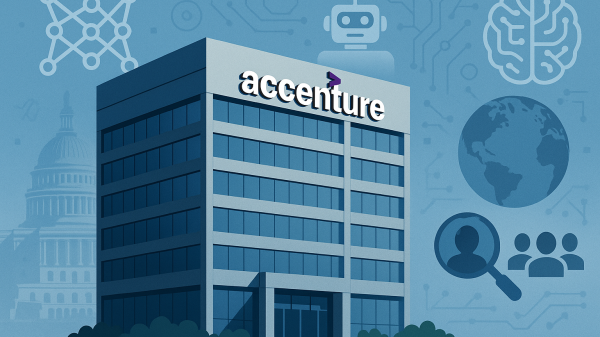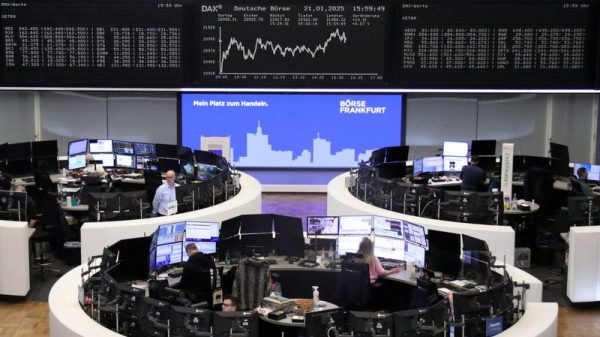Record quarters from big tech companies like Apple, Microsoft, Alphabet and Amazon are telling a positive story. But the steady run of layoffs tells a completely different one.
Investors see strong margins, strong cash generation and big plans for artificial intelligence. Workers inside the same firms see reorganisations, hiring freezes and jobs moving into smaller teams. Both things are true at once.
That is what makes this earnings season important. It is not only about profit strength. It is about what kind of growth these companies now want to buy.
Profits are strong, demand is real
The big tech groups again reported revenue at or near all time highs, showing that core demand in cloud, advertising, devices, and subscriptions remains steady.
Apple’s services division rose double digits and more than offset weaker iPhone sales, keeping overall profit near all-time highs.
Microsoft’s cloud revenue jumped as Azure posted around 40% growth, even while AI-related costs pushed margins slightly lower.
Alphabet passed the $100 billion quarterly mark for the first time, powered by a rebound in Search and YouTube ads and another strong quarter in cloud.
Meta grew revenue above 20 percent, proving that advertising demand is back, though the company warned spending on AI infrastructure will rise further.
Amazon’s $180 billion quarter showed both retail efficiency gains and renewed growth at AWS, its key profit source.
Netflix continued to expand steadily, helped by new ad-supported tiers.
None of this looks like a sector in distress. It looks like companies facing firm demand in software, in cloud, in digital ads, in streaming and in AI infrastructure.
They are producing very large cash flows quarter after quarter. That gives them room to invest. It also gives them room to make hard choices.
What stands out is the scale. A single quarter at Microsoft or Alphabet can now reach close to 100 billion dollars in sales. Amazon’s revenue is even higher. Margins are holding despite heavy investment.
This gives boards confidence that the AI and data centre buildout can continue into 2026. It also tells the wider economy that the main engine of US corporate profit is still healthy.
So why are thousands of people leaving?
If revenue is good, why are jobs going?
The answer is that the constraint is not revenue. The constraint is the cost of staying in the AI race.
Microsoft, Alphabet and Amazon each lifted capital expenditure by billions this year, pushing annualised spending toward levels. Alphabet told investors its capex will exceed $90 billion in 2025, almost twice last year’s figure.
Microsoft said it would spend “well over” $50 billion to expand data-centre capacity for AI workloads. Amazon’s infrastructure bill is running at roughly $34 billion a quarter, and still rising. These are extraordinary numbers even by big-tech standards.
AI servers, new data centres, energy contracts and specialist AI staff cannot be delayed. Those items are now a strategic part of every big tech company. They are also expensive.
To make room, managers look for flexible costs. Payroll is the most flexible. Many of the functions that expanded during the pandemic years can be run with fewer people.
Some work can be automated with current AI tools. Some can be shifted to lower cost locations. Some can be merged after the latest round of internal reorganisations. The result is layoffs that happen in good quarters, not in bad ones.
There is also an unspoken point. In 2020, 2021 and even 2022, tech firms hired ahead of demand. They did this to secure talent in a tight market.
They also did it because growth looked endless. Actual growth has been good. It has not been endless. Now there is a long, slow clean up of headcount. This is what workers are seeing.
What this tells us about the economy
This mix of strong profits and lower headcount sends a useful signal. It says that the next leg of US growth will be capital heavy and labour light.
The money will go into machines, chips, buildings and specialist teams. It will not go in the same way into broad based hiring.
That is new for big tech. In the 2010s, revenue growth almost always showed up in staff growth. In the current phase, revenue growth is being matched with discipline on people.
In the 2010s, every wave of digital growth required people: engineers, sales staff, content teams, logistics planners. In this cycle, the machines are doing more of the work.
The marginal dollar of investment now buys computing power, not human labour. That shift breaks the traditional link between rising corporate profits and rising employment.
This also explains the steady flow of layoff announcements from companies that are otherwise performing well. Boards are defending investment budgets by cutting labour costs instead of scaling back projects. It is a logic that others will copy.
When the largest and most profitable companies in the economy show that margins can be protected through automation and consolidation, other sectors follow.
The result is a two-speed economy. On one side are firms spending heavily on AI and infrastructure, generating strong earnings and high productivity per worker. On the other side are workers and smaller firms that depend on broad hiring by those same giants.
That divide will shape wage growth, inflation, and eventually consumer demand.
The hidden reallocation
Another way to read this quarter is to see it as a reallocation rather than a contradiction. Money is moving from medium productivity human work to very high productivity AI work.
A manager in a support function might cost 150,000 dollars a year. A single H100 based AI rack can cost several times that, but it can power products that reach hundreds of millions of users.
Boards will pick the second option. Not because they dislike people. Because the return on that dollar is higher and clearer.
This reallocation also explains the internal tone of many of these companies. Executives talk about fewer layers. They talk about shifting people to growth areas.
They talk about reviewing all roles. None of this is dramatic. It is simply a recognition that the bar for headcount has been raised.
If AI tools can make every remaining worker 10-20% more productive, then the total number of workers can be smaller without hurting output. That is what is happening now.
The social effect is more awkward. The layoffs tend to hit broad corporate roles. The hiring tends to be in narrow technical roles. So workers who leave do not always have a clear route back in.
That is unlike past tech layoffs, where growth in another unit could absorb people. The economy will feel this as a rise in permanent job loss rather than temporary job loss. That is a softer but longer shadow.
Where this leads next
The paradox of this earnings season is that it may be remembered not for record profits, but for the moment work itself began to detach from growth.
Big tech companies are no longer using prosperity to hire faster. They are using it to rewire how much labour growth really needs.
The new competition is about who can deploy capital the fastest, not who can hire the most engineers. That is a fundamental change in how corporate power scales.
Whoever turns investment dollars into computing power more efficiently than the rest wins.
The post Big tech surges to all time highs as AI costs outweigh human costs appeared first on Invezz




































